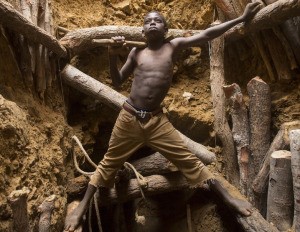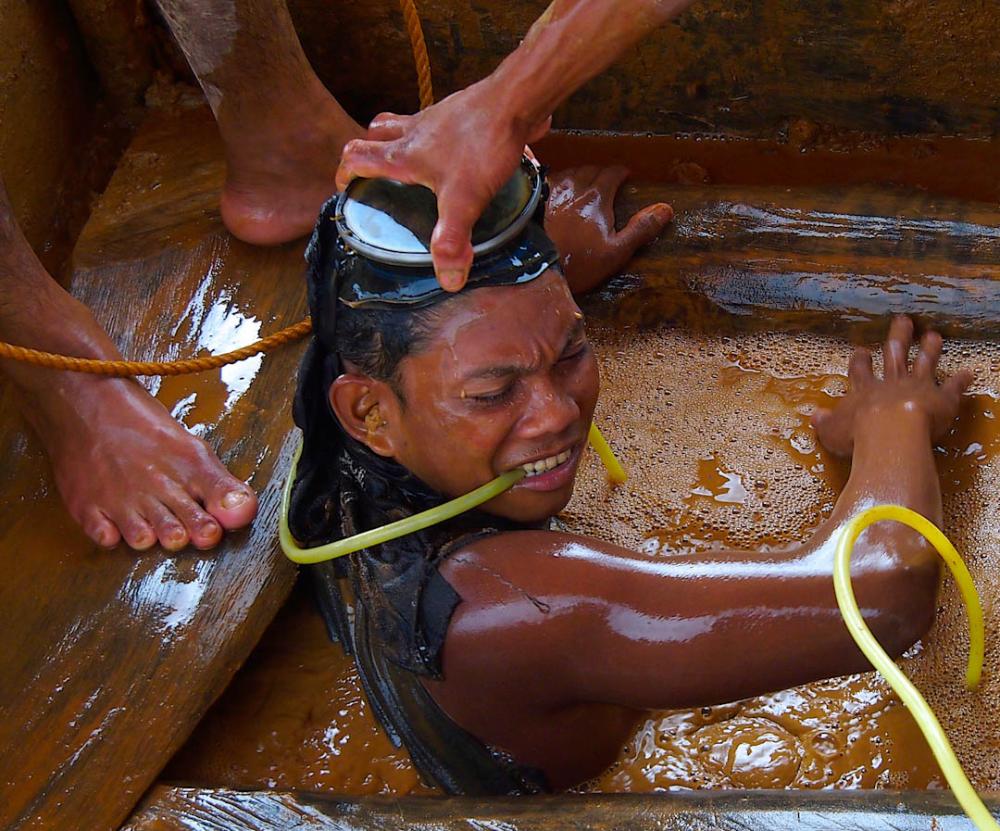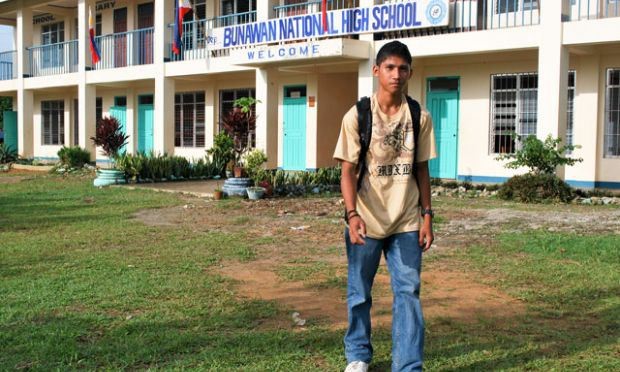Buried Childhoods — Child Labour in Mining and Quarrying
Jestoni* quit school at age 14 in order to take part in small-scale mining as a means to help support his family. They had abandoned farming for mining because of frequent flooding in their region of the Philippines. Jestoni’s mother worried about his safety as he dug in mineshafts for gold and carried heavy sacks of rock for eight to 12 hours per day.
According to the International Labour Organization (ILO), more than half (85 million) of the world’s 168 million child labourers perform hazardous work. Jestoni was one of the one million who work in mining.
The United States Department of Labor’s 2014 List of Goods Produced by Child Labor and Forced Labor indicates that child labour and forced labour is used to produce 29 products in the mining and quarrying sector. The top products in this sector, based on the number of countries using child labour in the production, include gold (18 countries[1]), coal (seven countries), and diamonds (six countries), but numerous other minerals, gems, and stones are also mined and quarried with the labour of children.

Nine-year-old Karim Sawadogo works with his uncle at a gold mine in Burkina Faso. Photo by Larry C. Price.
According to the ILO, almost all child miners work in artisanal, small-scale mining (ASM), beginning to help out as young as 4 and 5 years of age and working full time by the time they reach adolescence.[2] Artisanal mining is a low-technology industry where miners use their hands and rudimentary tools to extract minerals and raw materials,[3] with little protection from the inherent hazards of the work.
Poverty is the primary cause for child labour in ASM.[4] In times of economic crisis children may be forced to leave school in order to work full time and contribute to the family income, often working alongside their parents. Poverty is often the result of a changing climate—floods and droughts making agriculture unreliable for livelihoods. [5]
The fatality rate for child miners is roughly twice the rate for children who work in agriculture or construction, making mining the most hazardous sector for children.[6] Children who work in ASM perform the same jobs as adults do. Some work in tunnels not much wider than their bodies and risk death in the event of a cave in. Children on the surface can be injured by falling into holes in the ground which lead to mine shafts. Carrying heavy loads is harmful to children’s growing bodies and can permanently damage growing bones and muscles. Girls who stand in polluted and acidic water all day long washing ore or sifting sand often have genital infections.

A young miner surfaces after spending an hour at the bottom of a compressor mine in the Philippines. Image by Larry C. Price, 2012.
In the Philippines, children spend hours submerged in narrow, muddy wells up to 30 metres deep, extracting ore-laden soil while breathing through a thin rubber tube attached to a compressor.[7] Mercury poses a serious health risk to child miners who mix it with ore in a process to extract gold. Mercury is a toxic metal that affects the nervous system and can lead to lifelong disability and even death.[8] Cobalt and copper, mined with child labour, are toxic minerals that children should not have contact with and to add to the danger, radioactive uranium is often found with copper and cobalt. In some regions, lead contaminates gold ore. Hundreds of children have died from lead poisoning in artisanal mining communities in Nigeria. For a list of the tasks, hazards, and potential consequences children face in minining and quarrying, see this table.
Child labour in mining and quarrying violates a number of international conventions which many of the countries where children work in mining have signed and are bound to. These include the United Nations Convention on the Rights of the Child, and the ILO’s Worst Forms of Child Labour Convention (C182) and Minimum Age Convention (C138). Without adequate financial and human resources, however, laws to protect children have gone unenforced in many countries, such as the Democratic Republic of Congo.[9]
Some argue that child labour in ASM will not be eliminated until the poverty that often drives people and families into this form of work is addressed. Others say free, accessible education is imperative. While both are important, non-governmental organisations like Free the Slaves, and its partners in Ghana and the Democratic Republic of Congo, have seen encouraging results from projects that strengthen local awareness and build community resistance to child labour.
Jestoni, introduced at the beginning of this piece, was able to return to school at age 16, thanks to a World Vision child sponsorship programme in his area. World Vision reports that Jestoni hopes to one day become a police officer. In the meantime, he encourages his friends who are still involved in mining to return to school. “Nothing can replace the importance of education,” says Jestoni, “even the most expensive thing in the world.” Even the riches buried in a mine.

“Having left the dark tunnel in the mining site, I can now see a brighter future ahead,” says Jestoni, a former child miner in the Philippines. Photo: World Vision Philippines
*Jestoni’s name has been changed to protect his identity.
Sharon Fawcett is contributing writer to the Child Labor Coalition. This piece originally appeared on her blog, “Righting It” (rightingit.co) and can be found here.
Notes:
[1] One additional country—North Korea—reportedly uses forced labour but not child labour to mine gold.
[2] ILO (2011), Children in Hazardous Work. Geneva: International Labour Office, p.33. [Online], available from: https://www.ilo.org/wcmsp5/groups/public/@dgreports/@dcomm/@publ/documents/publication/wcms_155428.pdf [accessed 16 August 2015].
[3] World Vision Canada (n.d.), “Help Wanted,” p.4. [Online], available from: https://voicesdev.worldvisionmedia.ca/wp-content/uploads/2013/05/taleof2children-may8_FINAL-df.pdf [accessed 16 August 2015].
[4] Thorsen, D. (2012), “Children Working in Mines and Quarries: Evidence from West and Central Africa.” UNICEF Briefing Paper No. 4. Dakar-Yoff: UNICEF West and Central Africa Regional Office, p.4. [Online], available from: https://www.unicef.org/wcaro/english/Briefing_paper_No_4_-_children_working_in_mines_and_quarries.pdf [accessed 17 August 2015].
[5] Price, L.C. (2013), “One Million Children Labor in Africa’s Goldmines.” [Online], available from: https://www.pbs.org/newshour/updates/world/july-dec13/burkinafaso_07-10.html [accessed 16 August 2015]; World Vision Canada (n.d.), “Help Wanted,” p.7. [Online], available from: https://voicesdev.worldvisionmedia.ca/wp-content/uploads/2013/05/taleof2children-may8_FINAL-df.pdf [accessed 16 August 2015]; IRIN (2013), “Hunger Drives Hunt for Gold in South Sudan’s East.” IRIN News.org, 10 June. [Online], available from: https://www.irinnews.org/report/98204/hunger-drives-hunt-for-gold-in-south-sudan-s-east [accessed 16 August 2015].
[6] ILO (2011), Children in Hazardous Work. Geneva: International Labour Office, p.34. [Online], available from: https://www.ilo.org/wcmsp5/groups/public/@dgreports/@dcomm/@publ/documents/publication/wcms_155428.pdf [accessed 16 August 2015].
[7] ILO (2011), Children in Hazardous Work. Geneva: International Labour Office, p.35. [Online], available from: https://www.ilo.org/wcmsp5/groups/public/@dgreports/@dcomm/@publ/documents/publication/wcms_155428.pdf [accessed 16 August 2015].
[8] Ibid; Human Rights Watch (2012), “The Dangers of Mercury.” HRW.org, 15 June. [Online], available from: https://www.hrw.org/video-photos/interactive/2012/06/15/dangers-mercury [accessed 16 June 2015].
[9] International Trade Union Confederation (ITUC) (2010), “Internationally Recognised Core Labour Standards in the Democratic Republic of Congo. Geneva: ITUC, pp. 5-7. [Online], available from: https://www.ituc-csi.org/IMG/pdf/final_DR_Congo.pdf [accessed 16 August 2015].


